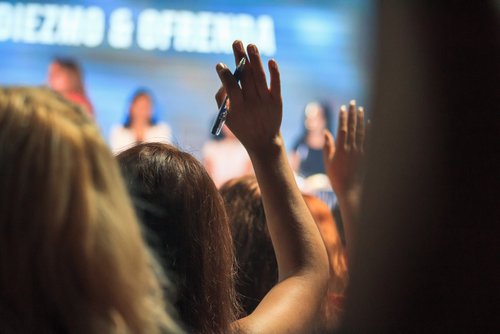Gender roles have long been ingrained in the fabric of society, dictating the behaviors, expectations, and opportunities of individuals based on their perceived gender. These societal expectations have evolved over time, influenced by culture, religion, historical events, and socioeconomic factors. In this article, we will dive into the complex landscape of gender roles, exploring their historical roots, current manifestations in different societies, and the profound impact they have on individuals and society as a whole. We will also examine the ongoing efforts to challenge and change traditional gender roles, considering the role of education, legislation, and activism in shaping a more equitable future. Join us on this journey as we navigate the intricate dynamics of gender roles in society and contemplate the possibilities for a more inclusive and progressive world.
Understanding Gender Roles: An Introduction
Gender roles are socially constructed expectations and norms that prescribe certain behaviors, roles, and responsibilities for individuals based on their perceived gender. These roles are deeply ingrained in society and can vary across different cultures and time periods. Understanding gender roles requires an examination of the historical, cultural, and social factors that shape them.
At its core, the concept of gender roles is rooted in the belief that there are distinct characteristics and attributes associated with masculinity and femininity. However, it is important to note that gender is not synonymous with biological sex. While sex refers to the biological differences between males and females, gender is a social construct that encompasses a wide range of identities and expressions.
Gender roles are often reinforced through socialization processes, starting from childhood. From an early age, children are exposed to messages and expectations about how they should behave based on their gender. Boys are encouraged to be strong, independent, and assertive, while girls are often expected to be nurturing, empathetic, and submissive. These prescribed gender roles can have a profound impact on the development and self-perception of individuals.
It is crucial to recognize that gender roles are not fixed or universal. They can vary significantly across different societies and cultures. What is considered acceptable or expected behavior for men and women in one society may be completely different in another. These variations are influenced by cultural values, religious beliefs, and social norms prevalent in a particular context.
Moreover, gender roles are not static but evolve over time. Societal changes, such as advancements in technology, shifts in economic structures, and political movements, can challenge and reshape traditional gender roles. It is important to examine the historical context in order to understand how gender roles have evolved and continue to transform in contemporary society.
In the following sections, we will delve deeper into the historical perspective of gender roles, examining the influence of culture and religion, exploring the evolution of gender roles over time, and discussing significant historical events that have shaped our understanding of gender roles in society. By gaining a comprehensive understanding of the origins and development of gender roles, we can better assess their impact on individuals and society as a whole.
Historical Perspective of Gender Roles
The historical perspective of gender roles provides us with valuable insights into how societal expectations and norms surrounding gender have evolved over time. By examining the influence of culture, religion, and significant historical events, we can better understand the origins and development of gender roles in society.
Influence of Culture and Religion
Culture plays a pivotal role in shaping gender roles. Different cultures have their own sets of norms and expectations regarding the roles and behaviors of men and women. For example, some cultures may emphasize patriarchal systems where men hold positions of power and authority, while women are expected to be submissive and fulfill domestic duties. In contrast, other cultures may promote more egalitarian ideals, where gender roles are less rigidly defined.
Religion also plays a significant role in shaping gender roles. Many religious doctrines and teachings prescribe specific roles and behaviors for men and women. These religious beliefs can reinforce traditional gender roles or challenge them, depending on the interpretation and cultural context.
Evolution of Gender Roles over Time
Gender roles have evolved over centuries, influenced by societal changes, economic transformations, and advancements in knowledge and technology. In ancient societies, gender roles were often based on biological differences and reproductive functions, with men typically engaging in activities related to hunting, warfare, and governance, while women focused on child-rearing and domestic tasks.
During periods of societal change, such as the Industrial Revolution, gender roles underwent significant transformations. With the rise of factory work, men increasingly became associated with wage labor outside the home, while women were relegated to domestic work. These rigid gender roles persisted for many years but gradually began to shift as women fought for suffrage, education, and employment opportunities.
Significant Historical Events Shaping Gender Roles
Throughout history, several significant events have shaped and challenged traditional gender roles. The women’s suffrage movement in the late 19th and early 20th centuries, for example, fought for women’s right to vote and paved the way for increased gender equality in many parts of the world. Other movements, such as the feminist movement of the 1960s and 1970s, further challenged societal norms and advocated for women’s rights in various spheres of life.
Additionally, the two World Wars had a profound impact on gender roles. As men were enlisted in the military, women took on non-traditional roles in the workforce and proved their capabilities in traditionally male-dominated fields. These experiences challenged societal expectations and led to a reevaluation of women’s capabilities and roles in society.
Understanding the historical perspective of gender roles provides us with a framework for comprehending the complexities and dynamics of gender in contemporary society. By examining the influence of culture, religion, and historical events, we can gain a deeper understanding of how gender roles have been shaped and continue to evolve over time. In the following sections, we will explore the current gender roles in different societies, the impact of gender roles on individuals and society, and the ongoing efforts to challenge and change traditional gender roles.
Current Gender Roles in Different Societies
Gender roles in different societies reflect the prevailing cultural, social, and economic dynamics of those specific contexts. While there is no one-size-fits-all approach, understanding the current gender roles in various societies provides valuable insights into the diverse ways in which gender is perceived and experienced around the world.
Gender Roles in Western Societies
In many Western societies, there has been a significant shift towards greater gender equality over the past century. Women have made substantial strides in areas such as education, employment, and political representation. Traditional gender roles, which once confined women to domestic roles and limited opportunities, have been challenged and redefined.
In contemporary Western societies, women are increasingly pursuing careers, occupying leadership positions, and participating in decision-making processes. Men, on the other hand, are gradually taking on more household and caregiving responsibilities, breaking away from the traditional breadwinner role. However, despite progress, gender disparities still persist, particularly in terms of pay equity, representation in top leadership positions, and the division of domestic labor.
Gender Roles in Eastern Societies
In Eastern societies, gender roles may exhibit different characteristics and expectations compared to Western societies. Traditional gender norms often emphasize distinct roles and responsibilities for men and women, with women primarily expected to prioritize family and domestic duties. However, it is important to note that gender roles in Eastern societies are not monolithic, as there are significant variations within and across regions.
In some Eastern societies, there has been an increasing recognition of the importance of gender equality and women’s empowerment. Efforts to challenge traditional gender roles have resulted in greater educational and employment opportunities for women, as well as changes in societal expectations. However, progress may vary across different contexts, and deeply ingrained cultural and social norms can still pose challenges to achieving full gender equality.
The Influence of Socioeconomic Factors on Gender Roles
Gender roles are also influenced by socioeconomic factors, such as income inequality, access to education, and economic opportunities. In societies where economic disparities exist, gender roles can be further exacerbated. For example, in low-income communities, traditional gender roles may be reinforced due to limited educational and employment opportunities for women.
In contrast, societies with greater economic development and resources tend to exhibit more progressive gender roles. Access to education and economic opportunities can empower women, leading to increased gender equality and a more equitable distribution of responsibilities between men and women.
It is important to recognize that gender roles within a society can be complex and multifaceted. They are influenced by a combination of cultural, social, and economic factors, and can vary significantly even within the same society. By examining the current gender roles in different societies, we gain a broader understanding of the diverse experiences and challenges faced by individuals based on their gender. In the following sections, we will explore the impact of gender roles on individuals and society, and examine the efforts to challenge and change traditional gender roles.
The Impact of Gender Roles on Individuals and Society
Gender roles have a profound impact on individuals and society, shaping not only the opportunities available to individuals but also their overall well-being and the functioning of communities. Understanding the effects of gender roles is crucial for recognizing the need for change and promoting greater gender equality.
Effects on Mental and Physical Health
Gender roles can have significant effects on the mental and physical health of individuals. Traditional gender expectations and stereotypes can create immense pressure and stress, leading to mental health issues such as anxiety, depression, and low self-esteem. For example, the expectation for men to be stoic and suppress emotions can contribute to higher rates of mental health disorders and reluctance to seek help.
Gender roles can also impact physical health. Societal expectations regarding body image and appearance can lead to body dissatisfaction and unhealthy behaviors, such as disordered eating, in both men and women. Additionally, gendered expectations around caregiving and work-life balance can create stress and exhaustion, affecting overall physical well-being.
The Role of Gender in Social and Economic Opportunities
Gender roles play a crucial role in shaping social and economic opportunities available to individuals. Traditional gender norms often result in unequal access to education, employment, and leadership positions. This perpetuates gender disparities and limits the potential for individuals to fully participate in society and achieve their goals.
Women, in particular, face systemic barriers in various spheres of life. They are often underrepresented in decision-making roles, face wage gaps, and encounter obstacles in career advancement. These limitations not only affect individual women but also have broader implications for society, as talent and potential remain untapped.
Gender Roles and Relationships
Gender roles impact the dynamics and expectations within relationships. Traditional gender norms can create imbalances in power, with men often assuming dominant roles and women expected to be submissive. These dynamics can perpetuate inequality, limit communication, and hinder the development of healthy and equal partnerships.
Moreover, rigid gender roles can restrict individuals’ ability to express their authentic selves and pursue fulfilling relationships outside of societal expectations. Breaking free from these roles can promote more egalitarian and emotionally fulfilling relationships.
Understanding the impact of gender roles on individuals and society is essential for fostering a more equitable and inclusive world. By recognizing the negative consequences on mental and physical health, the barriers to social and economic opportunities, and the limitations within relationships, we can work towards dismantling traditional gender roles and promoting greater gender equality. In the following sections, we will explore the efforts to challenge and change gender roles, including the role of education, legislation, and social movements in shaping a more equitable future.
Challenging and Changing Gender Roles
Challenging and changing gender roles is essential for creating a more equitable and inclusive society. Efforts to challenge traditional gender roles involve a combination of education, legislative changes, and social movements that aim to dismantle gender stereotypes and promote greater gender equality.
The Role of Education and Awareness
Education plays a vital role in challenging and changing gender roles. By promoting gender-sensitive curricula, schools can teach students about the harmful effects of gender stereotypes and encourage critical thinking about gender roles. Education can also help break down barriers by promoting equal opportunities for all students and teaching skills necessary for questioning and challenging societal norms.
Furthermore, raising awareness about gender equality issues through public campaigns, workshops, and community outreach programs can contribute to changing societal attitudes and behaviors. By fostering open dialogue and promoting understanding, individuals can become allies in challenging traditional gender roles and promoting a more inclusive society.
Legislation and Policy Changes
Legislation and policy changes are instrumental in challenging and changing gender roles. Governments can enact laws that prohibit discrimination based on gender, promote equal pay, and implement measures to ensure equal representation in decision-making positions. These legislative changes help create a legal framework that supports gender equality and protects individuals from gender-based discrimination.
Additionally, policies that promote work-life balance, parental leave, and affordable childcare can help challenge traditional gender roles that assign caregiving primarily to women. By establishing supportive policies, governments can empower individuals to make choices that align with their aspirations and break free from traditional gender expectations.
Social Movements and Activism
Social movements and activism have played a significant role in challenging and changing gender roles throughout history. Movements such as feminism have brought attention to gender inequality and advocated for women’s rights, leading to significant advancements in areas such as reproductive rights, workplace equality, and political representation.
Engaging in activism and supporting social movements can help challenge traditional gender roles by raising awareness, mobilizing communities, and advocating for policy changes. By amplifying marginalized voices, addressing intersectionality, and promoting inclusivity, social movements contribute to dismantling harmful gender stereotypes and promoting a more equitable society.
Changing gender roles is an ongoing process that requires collective effort and commitment. By challenging traditional gender norms through education, advocating for legislative changes, and supporting social movements, we can work towards a future where individuals are free to define their own identities and pursue their goals without limitations imposed by gender roles. In the following section, we will conclude by exploring the future of gender roles and the role of individuals in shaping this future.
Conclusion: The Future of Gender Roles
The future of gender roles holds great potential for progress and change. As societal attitudes continue to evolve, there is an increasing recognition of the need for greater gender equality and the dismantling of traditional gender roles. While there are challenges and barriers to overcome, individuals and communities have the power to shape a more inclusive and equitable future.
Predicted Trends and Changes
Several trends and changes can be anticipated in the future of gender roles. Increased representation of women in leadership positions, greater recognition of non-binary and gender non-conforming identities, and the breaking down of stereotypes are among the predicted shifts. As awareness and understanding of gender diversity grow, societies are likely to become more accepting and inclusive.
Moreover, there is a growing movement towards redefining masculinity and challenging toxic masculinity norms. Men are increasingly rejecting rigid gender roles that limit emotional expression and perpetuate harmful behaviors. This shift towards reimagining masculinity promotes healthier relationships, mental well-being, and overall gender equality.
The Role of Individuals in Shaping Future Gender Roles
Individuals play a critical role in shaping the future of gender roles. By challenging their own biases and assumptions, individuals can contribute to creating more inclusive environments where gender stereotypes are questioned and dismantled. Encouraging open dialogue, supporting diversity and inclusion, and advocating for equal opportunities are ways in which individuals can actively participate in shaping a more equitable future.
Parents and educators also have a significant influence on future generations. By promoting gender equality, exposing children to diverse perspectives, and fostering critical thinking, parents and educators can help break the cycle of traditional gender roles and empower young individuals to challenge societal norms.
Furthermore, supporting and engaging in activism and social movements is crucial. By joining forces with organizations and individuals who advocate for gender equality, individuals can actively contribute to the dismantling of harmful gender stereotypes and the promotion of a more inclusive society.
In conclusion, the future of gender roles holds the promise of greater equality, inclusivity, and acceptance. Through education, legislation, social movements, and the collective efforts of individuals, we can challenge traditional gender roles and pave the way for a world where individuals are free to express their identities and aspirations without limitations based on gender. By embracing diversity, questioning stereotypes, and fostering equal opportunities, we can create a future where gender is no longer a barrier but a celebration of the rich tapestry of human experiences.


















